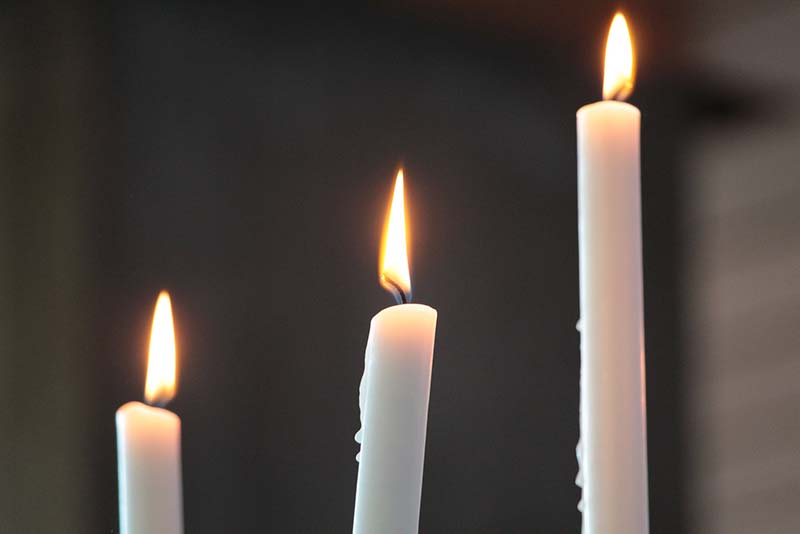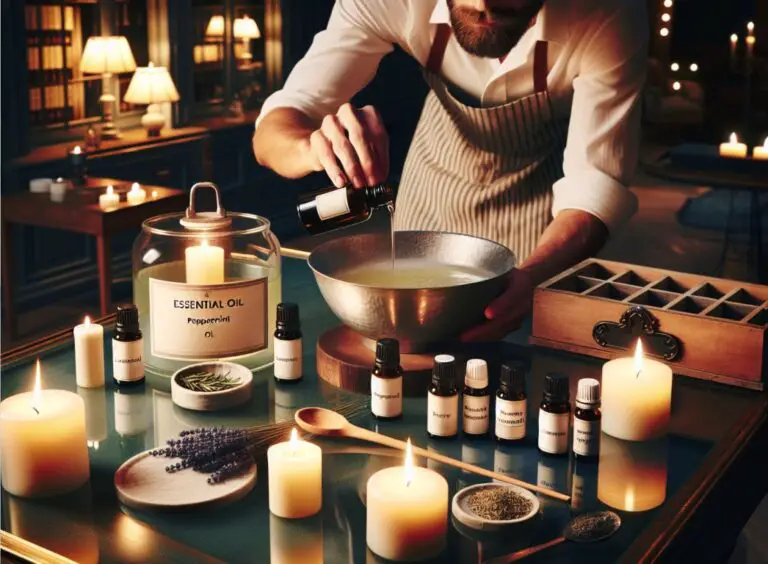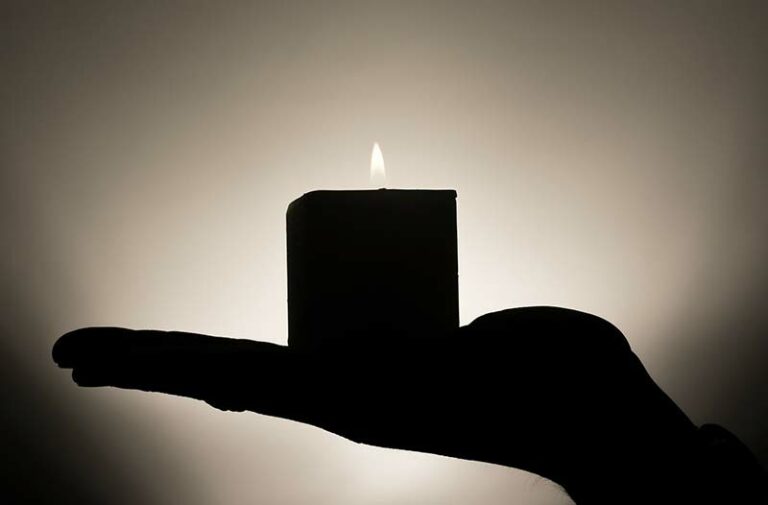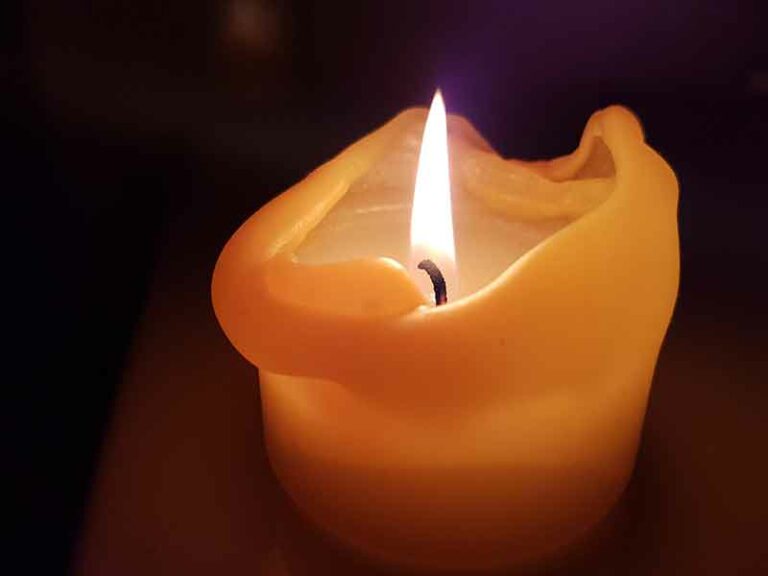Can You Use Paraffin Wax To Make Candles?
Have you ever come across the term “paraffin wax”? If you’re familiar with candles, you’re probably aware of the word paraffin wax, as well as the fact that it may be harmful. Paraffin is a chemical wax material made with solid straight-chain hydrocarbons.
They are used for many manufacturing purposes, and using paraffin wax in candle making is a popular question asked by many people.
So, can you use paraffin wax to make candles? The most straightforward answer is yes; you can use paraffin wax to make candles. Paraffin wax is an affordable wax type for making candles, and many candles in the market popularly use it.
Read – Candle Making As A Hobby
In this article, first, you will learn about what paraffin wax is. Then you will understand whether you can use paraffin wax to make candles? and the history of using paraffin wax in candle-making.
Then, we will discuss the candle types made from paraffin wax. And finally, you will learn some tips in producing paraffin wax candles. So are you ready?
Table of Contents
What is paraffin wax?
According to its description, paraffin wax is a milky, transparent chemical wax material with a firm texture and consistency. It’s made up of solid straight-chain hydrocarbons with melting points ranging from 120 to 150 degrees Fahrenheit.
Paraffin wax is often used in candle manufacture. Still, it also has a range of other uses in the industrial, cosmetic, and culinary industries.
Paraffin uses as a heavy-duty floor wax, textile, and paper waterproofing, leather tanning chemicals, metal-drawing lubricants, rust preventives, and masonry and concrete treatment as well as masonry and concrete.
It is possible to find paraffin in cosmetics like lipstick or the waxy texture of non-organic apples. Due to high melting temperatures, paraffin is used as an ingredient in some chocolate to protect it from melting in your hand at high melting temperatures. Shocking? No! It’s just incredible.
Paraffin is a lot easier to work with than it appears. You know more things than you think you do about it! You’ve probably been using paraffin for a long time.
You can find paraffin in various everyday items such as Vaseline and mineral oil. So, I’m guessing you now know what paraffin wax is.
Can you use paraffin wax to make candles?
Can you use paraffin wax to make candles? Yes, you can use paraffin wax to manufacture candles. Even though paraffin does not represent all candles on the market, it can recognize its smooth and firm surfaces.
Because of its consistent pour and hardening capabilities, paraffin is an ideal affordable wax for candles, especially those created by machines.
It has a high melting point and will keep aroma and colors better than other natural waxes, as well as smooth, non-heatable surfaces. It’s even praised for having the best burn duration and profile.
However, it is neither biodegradable nor natural. It is created from a non-renewable resource and is detrimental to human health.
According to the EPA, paraffin wax candles are a significant source of indoor air pollution. According to research published in 2009, the Department of Biological and Physical Sciences at South Carolina State University, paraffin-based candles are also more prone to create soot.
Burning these candles in a secure place can cause respiratory and skin irritation and the emission of several toxic compounds into the air.
Although paraffin is a more convenient and cost-effective solution, it can be hazardous to people and less environmentally friendly. If feasible, switch to a natural wax that generates less smoke and burns cleanly.
History of using paraffin wax in candle-making
It begins as a petroleum byproduct produced during the refinement of crude oil into different fuels such as gasoline. Slack wax is unpleasant and full of contaminants.
Scientists and manufacturers use the magic of chemistry to convert it until it reaches a specified amount of oil content (0.5 percent or less).
It is “completely refined” paraffin wax with the qualities required for candle-making. Which is appropriate in terms of melting temperature, moisture content, color, and so on?
Because paraffin has been around longer than more natural waxes like soy, coconut, or beeswax, it’s a more established working substance with well-established problems and limitations.
It’s pretty simple to get information on how to work with paraffin, and older candle-making manuals presume you’re dealing with paraffin.
Paraffin wax, developed in the 1850s, is used in 95 percent of candles today. It happened after scientists figured out how to purify petroleum byproducts effectively and cheaply to make candle wax.
This vital element has become quite popular because of its propensity to burn cleanly and reliably. It was also a lot cheaper than other candle fuels.
Although the invention of the light bulb reduced candle demand, it quickly restored as the oil and meatpacking sectors in the United States grew in the early part of the twentieth century.
This rise is attributable to an abundance of byproducts that had been accessible for the production of paraffin and stearic acid, the fundamental constituents of candles.
Paraffin is a go-to material in the candle business because it “holds color and aroma” well. In the 1990s, there was an extraordinary global boom in candle popularity, and novel waxes ranging from soybean wax to palm wax were studied and created.
What are the candle types made from paraffin wax?

You can use Paraffin wax to produce practically any sort of candle. The melting point is the most critical factor in determining what kind of candle you can manufacture with it.
Container candles in jars, cups, or glasses are paraffin with a low melting point made in less than 130 degrees Fahrenheit.
Votive, pillars, and other molded candles made using medium-melt point paraffin, made in 130 to 150 degrees Fahrenheit.
For more specialist uses, such as hurricane candle shells, overlapping, and other unique candle-making applications, high-melt point wax, which makes it more than 150 degrees Fahrenheit, is employed.
Tips for making paraffin wax candles
It’s essential to set up your workspace before you start creating candles, mainly because working with wax can be pretty dirty! Make sure you’re working on a clean, level surface, and move anything you don’t want to get wax on out of the way.
Also, make sure you have your jars and wicks available since the operation may go much faster than you anticipate. Here are some exciting tips for you to make candles using paraffin wax.
- If you’re not sure how much wax you’ll need, fill the container halfway with water.
If you’re not sure how much wax you’ll need, fill the container halfway with water. After that, pour it into a measuring jug, and count how many milliliters of water the container holds.
After subtracting 20%, you should have a reasonable estimate of how much wax your container carries in grams.
- Add fragrance oil to your wax at 185°F.
It’s critical that the fragrance oil thoroughly bonds and combines with the heated wax. As a result, regardless of the fragrance oil’s flashpoint, we recommend adding fragrance oil to your wax at 185°F.
It is the ideal temperature for the fragrance and polish to link together, giving your final candle the most delicate scent throw. It proves by extensive testing in our in-house labs.
- Fill your heating pot halfway with your now-measured wax
Fill your heating pot halfway with your now-measured wax. Warm your wax to 70°C while carefully swirling it. Temperatures should not exceed 80°C.
It takes only around just 10 to 15 minutes to dissolve. We used a glass bowl in a pan half-filled with water for our demonstration. Get the glasses ready.
- Wash your candle glasses in hot water
While your wax melts, wash your candle glasses in hot water, making sure there are no external items within and that they are scorched.
On the underside of the glass, place your candle safety label. Make sure to put them on a level surface.
- Incorporating Color
Open the bag of candle color and pour it into the melting wax after it has reached 70°C. Gently stir until all of the colors have dissolved and are equally distributed.
We recommend a concentration of 0.2 percent, which means a 10g bag of dye will color 5 kg of paraffin wax.
Vegetable waxes may have a greater loading need. (If you’re using liquid candle dye, start with a few drops and work your way up to your chosen color.)
Conclusion
Probably the most divisive wax on the market right now is paraffin. Although some criticize paraffin for being hazardous, it is one of the most used waxes for candle-making. It is made from slack wax, a byproduct of oil refining.
Paraffin has a wide range of applications. Paraffin may make any candle style; it’s simply a question of determining which “type” of paraffin is appropriate for you. Because they flow more easily, softer mixtures are more suitable for containers and votives.
Because more challenging mixes cure more “sturdily” than softer waxes, they generally require a second pour. Still, they perform well in candles that demand sturdiness, such as pillars and votives.
I guess now you have learned some facts on the topic of ‘Can you use paraffin wax to make candles?’ Yeah! You can!
Thank you for reading the post. Stay with HobbyLeads for more interesting posts like this.








